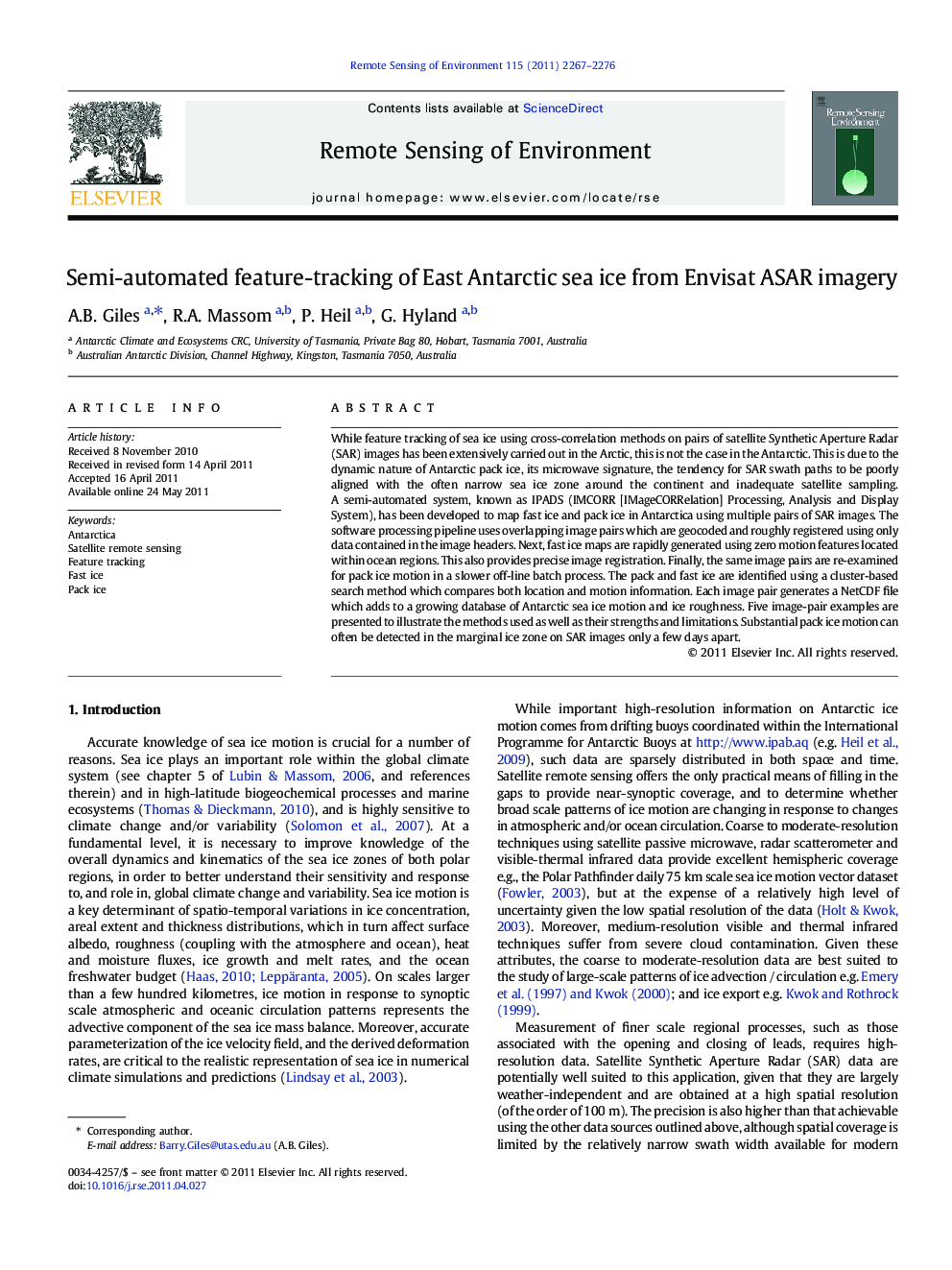| Article ID | Journal | Published Year | Pages | File Type |
|---|---|---|---|---|
| 4459434 | Remote Sensing of Environment | 2011 | 10 Pages |
While feature tracking of sea ice using cross-correlation methods on pairs of satellite Synthetic Aperture Radar (SAR) images has been extensively carried out in the Arctic, this is not the case in the Antarctic. This is due to the dynamic nature of Antarctic pack ice, its microwave signature, the tendency for SAR swath paths to be poorly aligned with the often narrow sea ice zone around the continent and inadequate satellite sampling. A semi-automated system, known as IPADS (IMCORR [IMageCORRelation] Processing, Analysis and Display System), has been developed to map fast ice and pack ice in Antarctica using multiple pairs of SAR images. The software processing pipeline uses overlapping image pairs which are geocoded and roughly registered using only data contained in the image headers. Next, fast ice maps are rapidly generated using zero motion features located within ocean regions. This also provides precise image registration. Finally, the same image pairs are re-examined for pack ice motion in a slower off-line batch process. The pack and fast ice are identified using a cluster-based search method which compares both location and motion information. Each image pair generates a NetCDF file which adds to a growing database of Antarctic sea ice motion and ice roughness. Five image-pair examples are presented to illustrate the methods used as well as their strengths and limitations. Substantial pack ice motion can often be detected in the marginal ice zone on SAR images only a few days apart.
Research highlights► SAR image correlation finds ice. ► Fast ice gives precise registration. ► Images a few days apart suitable. ► Many pack ice vectors detected.
